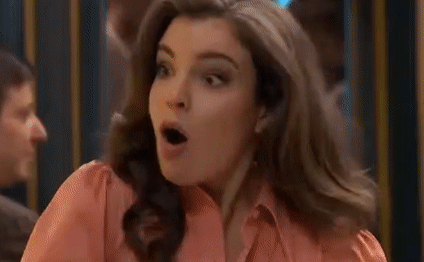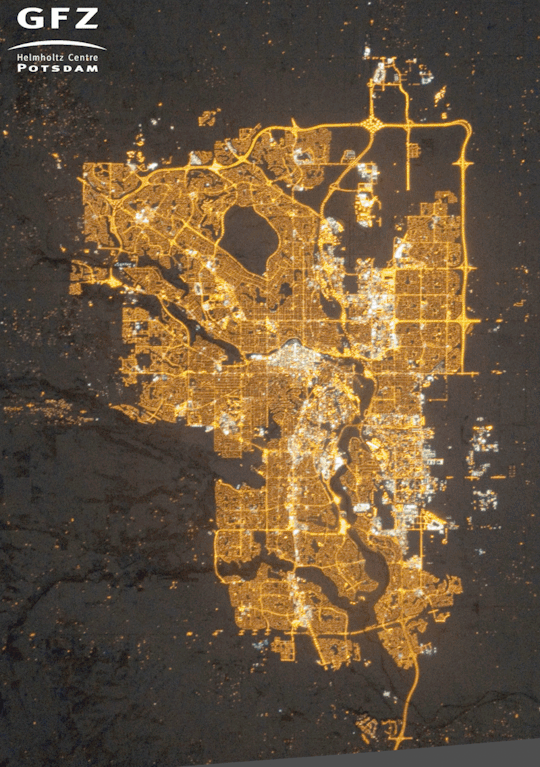#kyba gifs
Note
💛🌼🌼💛 send this to the twelve nicest people you know or who seem to have a good heart and if you get five back you must be pretty awesome 💖✨💖✨
The gif god has blessed me on this Monday 🥺

1 note
·
View note
Note
Hello my darling! May I request #47 kissing prompt with Hunter? Perhaps Hunter and the boys have been out on a lengthy mission and Reader knocks the wind out of Hunter with a loving kiss+embrace after spotting him leaving the Marauder?
Kyba you are amazing and I need to write for more hunter!! Everyone go check out and support Kyba, the gifs that come from their blog is *chefs kiss*
47- A kiss paired with a tight hug, knocking the breath out of the person being hugged.

Hunter's whole body felt gritty. Weeks of stalking the muddy swamps of Naboo at the request of the Nubian senator just led up to layers of dirt and swamp water. He felt gross, and he had taken three and a half showers already. Even so, the scent of the planet was still stuck to his hair, to the ship, sticking thickly to them. He didn't ever want to eat or smell fish, ever again. There was always a bigger fish, and he had fought just about all of them.
Hunter stretched his arm over his head, sinking into the chair more as Tech pulled in the ship for landing. Kamino was even more ocean, more rain, but it smelled fresher than Naboo.
"I'm gonna miss Naboo food," Wrecker rumbled as he stood, grasping his large supply pack. "Now we've gotta go back to eating mess food."
Hunter felt a smile flirt with his lips as the door opened. "Hey, you'll be okay. You've lived on it for this long." He tucked his helmet under his arm and scooped up his supply pack. "I need to grab some soap from the supply- I'll see you guys at the bunk room, all right?" He cast them a wave and diverted down the hall, walking briskly.
The white walls were bright, lights hot on his eyes. He glanced both ways, and, seeing no one was roaming, he ducked into the medical ward. The second the doors opened, the medic was sprinting to him, white coat a flurry around their form, and they collapsed into a heavy hug against his chest just as the doors shut. Hunter closed his arms around the medic, catching his breath as a beautiful pair of lips met his. Hunter gave a shocked grunt, catching himself, holding his beloved doctor closer.
The doctor’s sheer force of the endearing attack had knocked them both back a few steps. Leaning back on the wall, Hunter tugged them closer, tighter, firmer, more secure in the dim ward. The smell, the scent, the hands holding him- it washed away and leftover sensations of Naboo.
The medic pulled away, humming, the vibrations tingling Hunter’s lips. “Welcome home,” The medic giggled between kisses.
Hunter sighed happily, gripping the doctor closer, pulling their body closer as he leaned back against the wall. Home, indeed- it was wherever these healing and loving hands, these lips were.
#bad batch reader insert#hunter x reader#bad batch hunter x reader#bad batch hunter x you#hunter#clone force 99 insert#clone force 99 reader insert#hunter x you#minty writes
169 notes
·
View notes
Note
🌊 ✨💖⚡☄if you're receiving this, you make someone happy💞🌊⚡💖✨☄go send this to 10 people who make you happy or who you think need cheering up.💞✨🌊✨⭐☄If you get it back then the better🌊💞💖
Kyba, my sweet!! 🥺😭💜
You are an angel and I adore you so much!! 💜💜

9 notes
·
View notes
Photo


STREETLIGHTS CONTRIBUTE LESS TO NIGHTTIME LIGHT EMISSIONS IN CITIES THAN EXPECTED The combination of smart city lighting and satellite imagery allows measurements of the contribution of streetlights to urban lighting for the first time, and gives new hints for how to fight light pollution When satellites take pictures of Earth at night, how much of the light that they see comes from streetlights? A team of scientists from Germany, the USA, and Ireland have answered this question for the first time using the example of the U.S. city of Tucson, thanks to “smart city” lighting technology that allows cities to dim their lights. The result: only around 20 percent of the light in the satellite images of Tucson comes from streetlights. The study is published today in the journal “Lighting Research & Technology.” The team conducted an experiment by changing the brightness of streetlights in the city of Tucson, Arizona, USA, and observing how this changed how bright the city appeared from space. Dr. Christopher Kyba from the GFZ German Research Centre for Geosciences led the team that conducted the experiment, and said the work is important because it shows that smart city technologies can be used to perform city-scale experiments. “When sensors and control systems are installed throughout an entire city, it is possible to make a change in how the city works, and then measure the impact that change has on the environment, even from outer space,” Kyba said. Over 10 days in March and April of 2019, Tucson officials changed the brightness settings for about 14,000 of the city’s 19,500 streetlights. Usually, most streetlights in Tucson start out at 90 percent of their maximum possible illumination, and dim to 60 percent at midnight. During the experiment, the city instead dimmed lights all the way down to 30 percent on some nights and brightened them up to 100 percent on others. The city lights were observed by the US-operated Suomi National Polar-orbiting Partnership (NPP) satellite, which is famous for its global maps of light at night. The satellite took cloud-free images of Tucson on four nights during the test, and on two other nights with regular lighting after the test. By comparing the city brightness on the 6 different nights, the researchers found that on a normal night, only about 20 percent of the light in satellite images of Tucson comes from streetlights. The results have important implications for sustainability, according to study co-author Dr. John Barentine from the International Dark-Sky Association. In a second experiment conducted at the same time, Barentine, Kyba and their co-authors measured the sky brightness over Tucson from the ground. They examined how varying the illuminance of streetlamps affected the sky brightness and showed that as with light emissions seen from space, most of the sky brightness over Tucson is also due to other sources. “Taken together, these studies show that in a city with well-designed streetlights, most of the light emissions and light pollution come from other lights,” Barentine explains, including light sources such as bright shop windows, lit signs and facades, or sport fields. The authors say that local and national governments therefore need to think about more than just street lighting when trying to reduce light pollution. According to the researchers, the difference in the streetlighting brightness on the different nights is barely perceptible to the people on the street, as our eyes quickly adapt to the light levels. They report that the city received no comments or complaints about the changed lighting during the test. There is also no evidence or suggestion that reducing lighting levels as part of the experiment had any adverse effect on public safety. Kyba is therefore excited by the idea of performing such experiments more regularly, and in other municipalities. “Instead of dimming lights to the same level late each night, a city could instead dim to 45% on even days and 55% on odd days,” Kyba suggested. “City residents wouldn’t notice any difference, but that way we could measure how the contribution of different light types is changing over time.”
0 notes
Photo


The Switch to Outdoor LED Lighting Has Completely Backfired
To reduce energy consumption, many jurisdictions around the world are transitioning to outdoor LED lighting. But as new research shows, this solid-state solution hasn’t yielded the expected energy savings, and potentially worse, it’s resulted in more light pollution than ever before.
Using satellite-based sensors, an international team of scientists sought to understand if our planet’s surface is getting brighter or darker at night, and to determine if LEDs are saving energy at the global scale. With the introduction of solid-state lighting—such as LEDs, OLEDs, and PLEDs—it was thought (and hoped) that the transition to it from conventional lighting—like electrical filaments, gas, and plasma—would result in big energy savings. According to the latest research, however, the use of LEDs has resulted in a “rebound” effect whereby many jurisdictions have opted to use even more light owing to the associated energy savings.
Indeed, as the new results show, the amount of outdoor lighting around the world has increased during the past several years. “As a result, the world has experienced widespread ‘loss of the night,’ with half of Europe and a quarter of North America experiencing substantially modified light-dark cycles,” write the researchers in the new study, which was published today in Scientific Advances.
This conclusion was reached after analyzing high-resolution images collected by the Day-Night-Band (DNB) instrument that’s onboard the Suomi NPP weather satellite. This sensor features a spatial resolution of 2,460 feet (750 meters), and can “see” light in the range of 500-900 nm (humans see in the range 400-700 nm). Traditional lamps emit some infrared that the DNB can detect, and LEDs produce a lot of blue light that the sensor cannot see. So as cities transition their outdoor lights to LED, scientists often see decreases in the light observed by satellite (which, to the human eye, would seem to have the same brightness).
“For that reason I expected that wealthy countries would appear to be getting darker (even if that wasn’t truly the case). Instead, we observed wealthy countries staying constant, or in many cases increasing,” said Christopher Kyba, lead author of the study and a researcher at the GFZ German Research Centre for Geosciences, in an interview with Gizmodo. “That means that even though some cities are saving energy by switching to LEDs, other places are getting brighter by installing new or brighter lamps (that need new energy). So the data aren’t consistent with the hypothesis that on the global scale, LEDs are saving energy for outdoor lighting applications.”
Researchers have been documenting the steady growth of artificial lighting ever since it was invented, and they’ve been wondering when the trend might stop. During the second half of the 20th century, electric light grew at an estimated rate of 3 to 6 percent per year. According to the new study, Earth’s artificially lit outdoor areas grew by 2.2 percent each year from 2012 to 2015, with a total radiance growth of 1.8 percent each year. During this span, nearly 60 countries experienced rapid increases in nighttime illumination between 110 to 150 percent, while another 20 countries experienced growth rates as high as 150 percent or more. Nearly 40 remained stable, with only 16 countries experiencing decreasing rates of nighttime illumination.
Needless to say, and as Kyba pointed out, these rates weren’t consistent around the globe. In developed nations like the United States and Spain, illumination rates remained stable, but most nations in South America, Africa, and Asia experienced growth. In war-torn countries, such as Syria and Yemen, the rates of outdoor lighting decreased. The new study shows that, when it comes to nighttime illumination, most of the world is still playing catch up to First World outdoor lighting standards.
Disturbingly, the results presented in the new study may actually be worse than the data suggests. As previously mentioned, DRB is not able to detect low-wavelength blue light, which humans can see. Our planet, therefore, is even brighter at nighttime than the data suggests.
“This study is important because it validates with data two things we have suspected: that the rate of growth of light pollution continues upward on a worldwide scale, and that the migration of outdoor lighting from older technologies to LED isn’t having the anticipated benefit in terms of global reductions in energy usage,” John Barentine, the resident physical scientist for the International Dark-Sky Association, told Gizmodo. “The latter point is especially important because a number of governments have been convinced to convert their outdoor lighting to LED on the basis of promised reductions in energy usage.”
Barentine, who wasn’t involved in the new study, says the cost savings from the improved energy efficiency of LED lighting has been directed towards the deployment of more lighting, and with important environmental consequences both in terms of light pollution and carbon emissions.
“It’s not hyperbole to describe the global problem of light pollution as both unprecedented and astounding,” he said. “Beyond the energy issue, the main environmental impact of artificial light at night is on the health and wellbeing of practically every organism on Earth, including humans.”
Nighttime illumination is considered a serious environmental pollutant, one that’s disruptive to nocturnal animals, plants, and microorganisms. But it’s also bad for human health as it disrupts the biological circadian rhythm, leading to metabolic disorders.
University of Exeter community ecologist Thomas Davies, who’s not affiliated with the new study, says it’s no secret that artificial light at night is a globally widespread pollutant, but estimating the rate at which it is expanding has been technically challenging.
“This research overcomes many of these technical issues, providing reliable estimates of the global rate of expansion in artificial light pollution,” Davies told Gizmodo. “The numbers are truly shocking, given that we know illuminating the nocturnal environment can have widespread ramifications for the environment and human health.”
Barentine says the solution to this problem is actually quite simple, but it’ll require us to gradually change our relationship with light at night.
“We could instantly reduce the problem by about half if we assured that all outdoor lighting fixtures were fully shielded, meaning that they emitted no light directly above the horizon,” he told Gizmodo. “We could then further reduce the amount of light pollution in the world if fixtures were properly designed and installed such that the light they emit was confined to the task area, and provided in no greater intensity than needed to safely illuminate the task. Lastly, we could reduce the biological harm of our lights by ensuring that they emit as little short-wavelength (blue) light as possible, by choosing ‘warmer’ lamps.”
The most effective way to bring about these changes is through public policy, says Barentine, so we should encourage the encoding of these principles into local, regional, and national laws throughout the world.
These solutions sound simple, and they’re certainly sensible, but it’s rather convenient for those of us in the developed world to impose such lofty standards onto places where nighttime light is being used for the very first time. Sure, we need to change the culture around the use of outdoor light, but let’s start this conversation in places where we already take nighttime illumination for granted.
[Scientific Advances]
Images:
Carla Schaffer/AAAS
Satellite images of Calgary, Alberta, taken from the ISS in 2010 and 2015. Many areas on the outskirts are newly lit compared to 2010, and many neighborhoods have switched from orange sodium lamps to white LED lamps. (Image: Earth Science and Remote Sensing Unit, NASA Johnson Space Center)
#light pollution#outdoor lighting#leds#led#artificial lighting#nighttime illumination#oled#oleds#pled#pleds#sold-state lighting#solid state lighting#gif#pollution
0 notes
Note
trick or treat! >:3c

treat! :3
#amuposting#my art#chibi#ms4#kyba#halloween costume#cowgirl#asks#anon#kyba is from the period where cowboy movies were REALLY at their peak of popularity#so i think she'd like dressing up as one!#kyba loves long skirts and i think this one suits her very well#thank you for the ask!
4 notes
·
View notes
Text
youtube
Единственото, което виждам сега, е колко труден съм.
Как ме траеш 3 години и отгоре,
навярно зор е?
Но и двамата знаем, че т'ва, което имаме е сигурно - като в трезор е!
Ценно и драго, прилежно прибрано - като в класьор е!
А сякаш бягам подир времето във вечна гонка, нагърбен с бремето,
а то като горяща отломка - изгаря белези
върху белези, кара ме да вникна в себе си,
да търся прелести, измежду плевели
и тръни,
уж, че нещо скрито има зад пътеки и
стръмни, кални баири...
🖤
4 notes
·
View notes
Audio
this is for everyone that asks me if i still make music
3 notes
·
View notes
Photo

#valyanatour#valyanatourdnepr#kyba#trip#travel#турагенство#днепр#горящийтур#авиабилеты#море#океан#солнце#пляж#отдых#каникулы# (at Dnipro) https://www.instagram.com/p/BpEZ45nh4Sf/?utm_source=ig_tumblr_share&igshid=43yffnrkur6a
#valyanatour#valyanatourdnepr#kyba#trip#travel#турагенство#днепр#горящийтур#авиабилеты#море#океан#солнце#пляж#отдых#каникулы
0 notes
Note




I hope you get to feeling better, babu!! Here's some lovely Hunter gifs from my little ol vault of 'em 💖❤️💝💗💖
Kyba, you angel!!
You literally picked all the right gifs! Those are all Hunter moments that I love so much! How did you know?? 😭💜
That helped a lot more than you know! Thank you, my sweet friend!
3 notes
·
View notes


